Best road handlebars: How to pick the right option for your needs
With so many options available, how do you choose the best road bike handlebars?
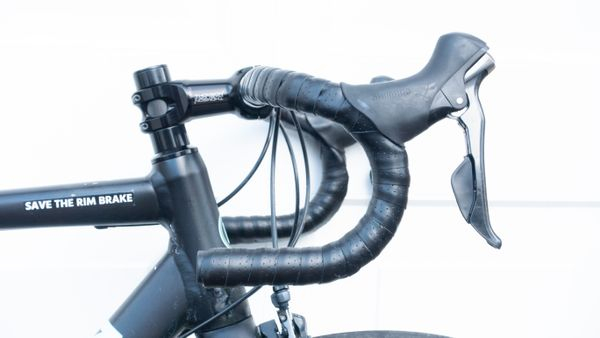
Road bike handlebars all do the same thing when you drill down into it. They all offer multiple hand positions, attach via a stem to your fork's steerer, and have your brake levers, usually incorporating gear shifters, mounted to them.
Beyond that, they are a good way to make more subtle changes to the ergonomics of your bike, and I've found can have more of an impact than you might expect, especially with a swap to some of the best bar tape too. Differences in drop, reach, bend shape, and flare can have big implications for comfort, especially on longer rides, and given the bars are one of the key leading edges on a bike there are significant aero gains to be won, too. What's more, swapping from alloy to carbon can save you grams as well, if you're that way inclined.
There are uncountable options available on the market, and given that ergonomics are a very personal thing I've steered clear of suggesting one bar is 'better' than another. Instead, I've picked some out that I've enjoyed using to illustrate distinct categories within the market, as well as some alternatives.
If none of them floats your boat then we've also got a guide to the best gravel handlebars that have options with more flare, more cushioning, and a greater emphasis on ergonomics. It can be a confusing landscape, so at the bottom of the page I've put together an explainer on reach, curve and drop, plus answered some common questions that crop up when discussing handlebars.
Quick list
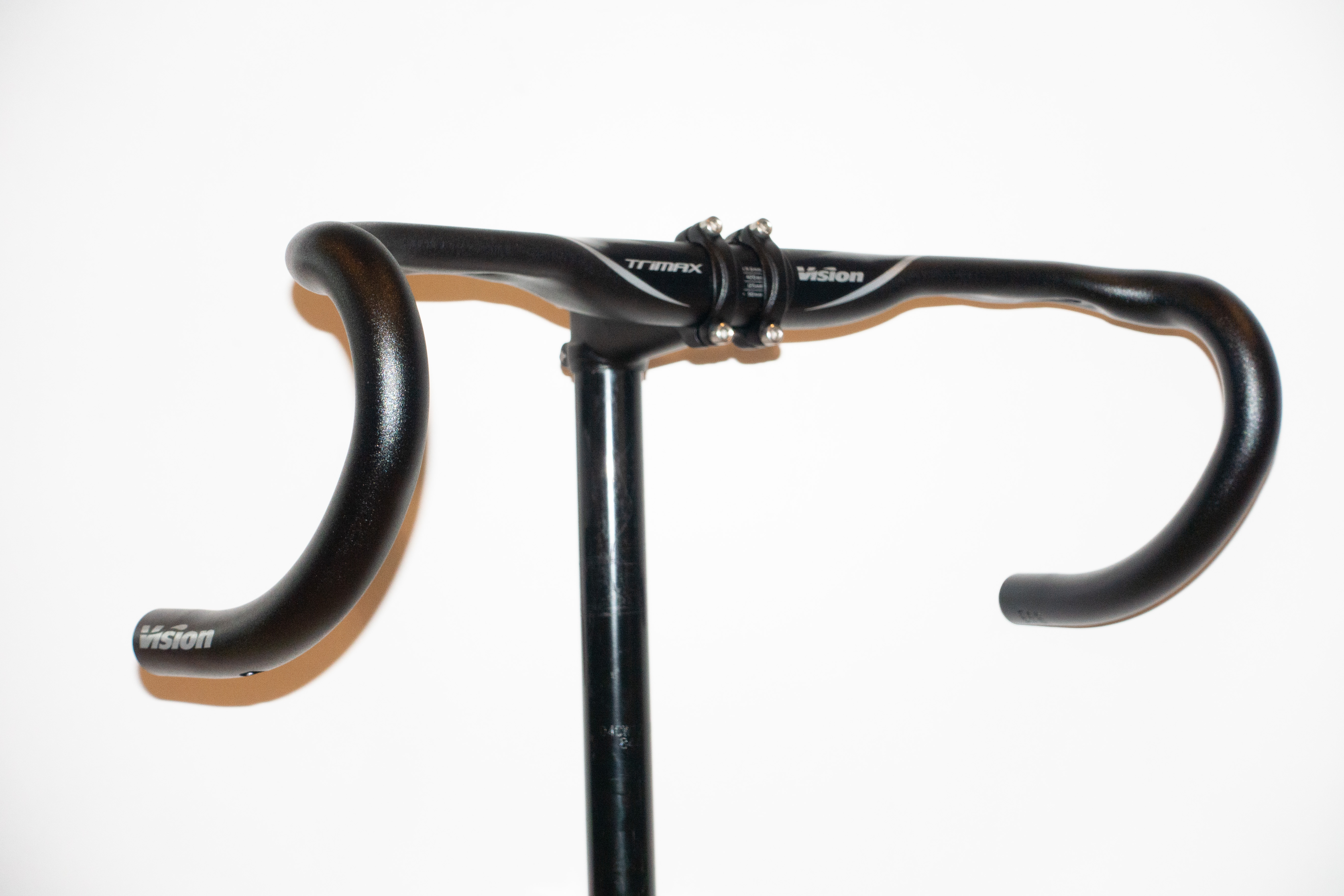
The Vision Trimax Aero is an aero bar made of alloy rather than the more usual carbon. That makes this bar a lot more affordable although, as expected, with a bit of a weight penalty.

If you are looking for a classic deep drop handlebar, the Deda Zero100 Deep is a great option, whether for a classic look or just to get really aero for sprints.

A modern bar shape, with shallow drops and a very affordable price make the Deda Zero100 RHM bars a great pick. There's a good range of widths if you want to go narrower.

Aero carbon bars will give you the pro look and save weight, with the Pro Vibe Aero SL a premium option. Just don't expect to have space for much bar furniture.
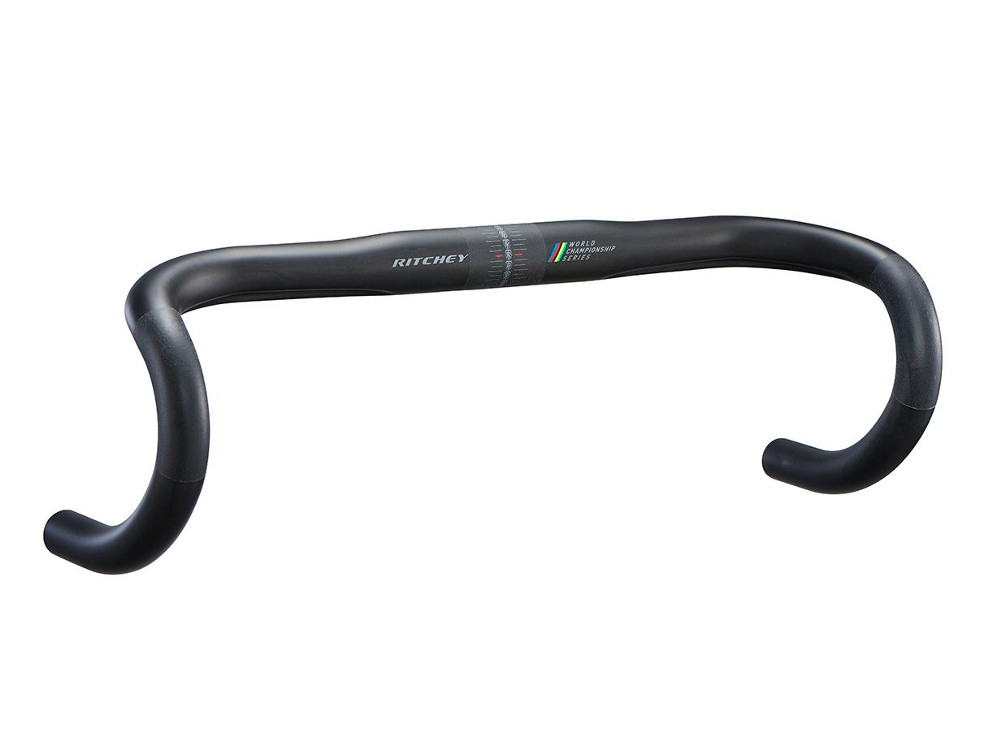
Deep drop carbon bars are a rarity and these Ritchey ones are now discontinued, although you can still find them for sale. Buy soon if you want the look.
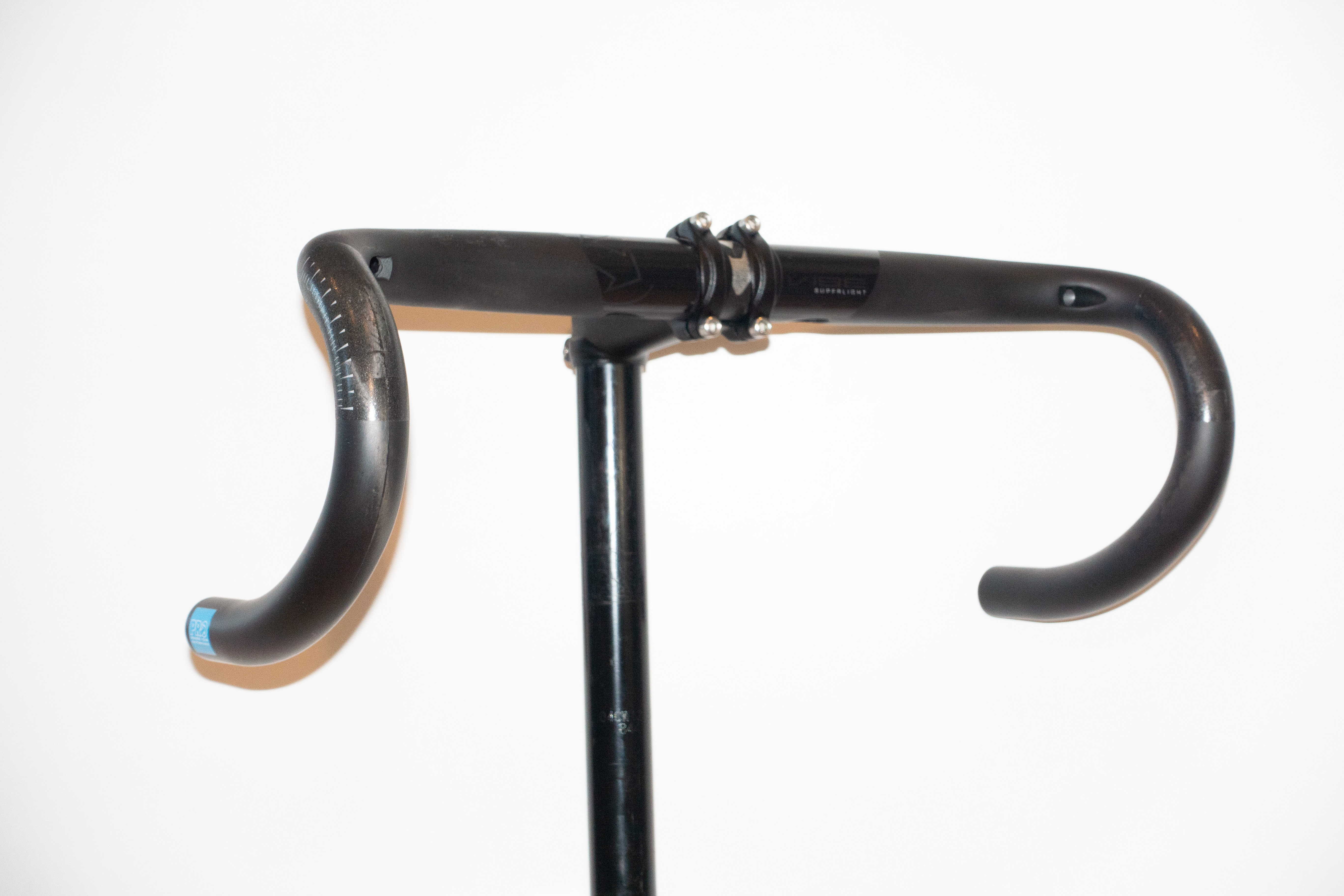
Another Pro Vibe option, but with a round section, the Carbon Compact is light at 220g, although expensive and not suitable for bar extensions.
Read more below

For the weight weenie, these bars weigh just 131g for a 420mm width. You can go even lighter if you special order or get custom bars to your exact spec.
Read more below

The Vision Metron 5D give you a one-piece bar/stem that's lighter, more aero and more pro-looking than a two-piece, although with fiddly cable routing and a big price.

If you need a higher ride position, these riser bars will add 100mm to your bar height. They're on the heavy side, but maybe look nicer than a riser stem.
Best road bike handlebars available today
There is every chance that you've gone over the products in the quick list and still aren't totally sure what you're after. I get it, there are so many options, and it's tricky to work out what you're after. My advice is to hone in on what you like and don't like about your current setup and go from there.
If you have a set of alloy ergo bars and just want to make your bike lighter then think about swapping to carbon. If you're not fussed about weight but want some aero improvements then an alloy aero bar is the section to look at. If you want to be able to get a little lower then look up the drop figure for your bars and find something in the same market segment with a similar shape but a larger drop. A bit of forethought up front will stop you from feeling bemused when faced with such an array of options.
Because there isn't really a perfect handlebar I've also curated a few more options for each category below, to save you scrolling endlessly through online retailers.
Alloy Aero
From a price-performance ratio, this is probably the most cost-effective of all the categories. You get the added benefit of increased aerodynamics, without the burdensome cost of carbon. Sure, there will be a weight penalty, but above a relatively sedate 15kph aerodynamics trumps weight, and as the relationship between speed and air resistance isn't linear, but a square, the faster you go the benefits multiply.

1. Vision Trimax Aero
Specifications
Reasons to buy
Reasons to avoid
Wing-shaped bars have long been the preserve of carbon fibre aficionados, and therefore those with deeper pockets. There are though, if you know where to look, aerodynamic options made of aluminium like the Vision Trimax Aero.
You get the same wing shape, if a little less dramatic, as the brand's Metron bars. There are cable groves for Di2, as well as a larger internal cable tunnel. You get a 125mm drop, a 90mm reach, and a 7-degree forward sweep.
Sadly though for an aerodynamic bar, you can't go narrower than 40cm, so be prepared to turn your hoods inwards.
If the Vision Trimax Aero doesn't float your boat then you could look at the Prime Doyenne Aero, which is relatively cheap, has internal cable routing, a pronounced wing top section, and the drops extend rearwards further than many.
If you don't want such a wing shape, the PLT Compact Ergo from Pro is more of a traditional ergo drop, but with a more subtle flattening of the tops that's halfway between an aero bar and something ergonomically instigated. It doesn't have internal routing, but smaller riders may like this as it comes in a 36cm width.
If you want a bit of a flare to the drops then the Bontrager Elite Aero VR-CF could be up your street. It's got a 4-degree outward sweep and semi-internal cable routing if you want to keep the front end a little neater.
Alloy Compact

2. Deda Zero100 RHM
Specifications
Reasons to buy
Reasons to avoid
The Deda Zero100 RHM, which stands for 'rapid hand movement' typifies what most riders would think of as a normal, quality modern alloy handlebar. It's got a classic compact shape, though with a slightly rounder lower section than some. Regardless it's going to leave the hoods in a straight line forward rather than having them on the curve of the bar, as is the modern way.
There's no internal routing, but there is a groove pressed into the underside of the round top section to allow you to run the cables more flush for better ergonomics. As a bonus, unlike many options, these come in widths as narrow as 380mm (which most brands would label 360mm, due to Deda's outside edge-to-edge measurement), which is great for riders looking for free aero gains.
I suspect this is going to be the main event for many of you, especially if you're putting together a bike from the ground up. It's where there are the most options out there, and consequently where there is the most potential for confusion. I will allay any fears though; having tried a tonne of compact drops over the years they are all extremely similar. Unless you go for something from the fringes with a lot of flare, a lot of reach, or a larger drop they will all feel relatively similar, so you can focus more on things like weight, or which brand logo you want peeping out either side of your stem.
Alternatives include the Prime Doyenne Lightweight Alloy bar, which is especially useful for smaller riders as (like the Deda bars) it comes in a 36cm width, which isn't always easy to find, and has a reasonable price tag too. The similarly priced Short Reach Bars from Specialized will also work for most applications and come in an all-matte finish, in contrast to the glossy mid-section of the prime.
If you want something a little more radical then take a look at the WCS Skyline from Ritchey. The tops are ovalised and backswept, which I've always enjoyed on other Ritchey handlebars. The main point of difference though is the drops, which feature a much more angled shape, giving you a long, flat section in the hook of the drops if that's where you like to spend a lot of time riding.
Alloy Classic Curve

3. Deda Zero100 Deep
Specifications
Reasons to buy
Reasons to avoid
The classic curve bar is an endangered species, but one you still see on pro bikes. The Deda100 Deep is an archetypical bar, with a sloping section down to the hoods, a very deep 145mm drop, and a 95mm reach.
They won't be to everyone's liking, but if you're building up a bike with old-school vibes they're a great choice. If the drop is too much for you Deda also makes a shallower drop version, but that wouldn't fulfil your dreams of being a mid 90's pro no, would it? Aside from the shape, the only real downside is the price. On the upside, they are light at 254g for a 42cm bar. It's worth noting that Deda measures from the outside not the centre of the tube, so a 42cm bar is equivalent to a 40cm.
Failing that there's the perennial Ritchey Classic Neoclassic, which has the advantage of coming in silver for those of you who've been hoarding vintage Campagnolo groupsets, or there's the Zipp Service Course SL-88 which has a 3-degree outward sweep to the drops for those who prefer a little bit of flare. Finally, you could also try the Energy Traditional bar from FSA which has a 2-degree outsweep down below.
Carbon Aero

4. Pro Vibe Aero SL
Specifications
Reasons to buy
Reasons to avoid
I've fitted these up to my gravel bike, despite the fact they are very much road bars (I'm doing so at my own risk). Ergonomically they are excellent, with the main portion of the drops narrowed for an aero advantage, before flaring out at the ends. This really locks your hands in place when in the drops, though is less suitable to those with larger paws. They do come in 370mm wide too, which is great for narrower riders or just those looking to get even more aero. The main drawback, beyond the high RRP, is the fact that the bars flatten out immediately after the clamp area leaving no room at all for clipping on lights or computers; stem mounts only here!
If the Pro Vibe option isn't to your tastes then you could cosplay at being Wout Van Aert with a set of Vision Metron 4D bars. There's a 'Flat' version with flat, wing-shaped hoods, or an ergo version where there is a slight rise after the clamp area, leaving the wings to slope downwards. To my mind the flat version makes more sense, as if you're buying aero bars you're not planning on spending a great deal of time on the tops anyway, so making them more ergonomic is a little daft. Also be aware the drops kink outwards near their terminus at the base of the curve, putting the base of the drops wider for descending control, but keeping the frontal area more narrow.
Prime has the Primavera bar, which is noticeably cheaper than most other options, has internal routing and comes in a greater range of widths (down to 360mm). Given that opting for a narrower bar will probably save you more watts than swapping from a round to an aero top section, this could be the best bang for your buck of any carbon bar. The only downside is the drops truncate rapidly after the curve, so you'll be riding more in the hook of the bar than on the bottom section unless you opt for some bar extenders (a useful upgrade if you want to ride more on the flat section).
Finally, you could opt for the EC70 bar from Easton. It doesn't do anything that the others don't, but it is another option that's more competitively priced than options from the likes of Pro and Vision. You can't get narrower than 40cm, but you do get a giant "EASTON" logo across the whole winged section so everyone will know which brand you're riding.
Carbon Classic Curve

5. Ritchey WCS Carbon Neoclassic
Specifications
Reasons to buy
Reasons to avoid
If you thought classic curve alloy bars were hard to find then just wait until you try and find carbon versions... The WCS Carbon Neoclassic from Ritchey is, as far as I can tell, the only carbon classic curve handlebar left on the market.
I'm sure someone in a forum somewhere will immediately comment to the effect that I'm wrong, but I can handle that. In any case, if you want classic carbon, this is it, and you'd better not want anything narrower than 400mm. If you're dead set on weight savings then these make sense, but for a classic bike restoration, or anything other than a high-performance machine where every gram counts then the alloy options from Deda and the like probably make more sense to me.
Bad news, sports fans... From my extensive searching if you want a classic drop bar made from carbon you're limited to the Ritchey WCS Carbon Neoclassic - and they've been discontinued.
Carbon Compact

6. Pro Vibe Carbon Compact
Specifications
Reasons to buy
Reasons to avoid
In a similar way to the alloy compact segment, this is where most carbon bars fall on the bell curve, so there are more options to choose from, and also as with the alloy bars, they will all to some degree feel relatively similar.
220g for a 42cm handlebar is appreciably light. It's not crazy like the Darimo Eclipse, but it's light, with a pretty standard compact drop shape and round tube profile throughout. Unlike budget options like Deda's alloy bars, you get fully internal routing, which does make life more fiddly but is a more svelte solution. You can't go narrower than 400mm, and you will have to fork out over £300 if you're paying full price, but this is a pro-tier product.
One thing to be aware of here, and with many other superlight options, is you often cannot clip on TT extensions as only the stem clamp area is suitably reinforced, so if you're a triathlete then maybe look elsewhere and take the weight penalty for the aero gains.
If you need a jumping-off point the Ritchey Carbon Evocurve is as good a place as any. I really enjoy the Evocurve shape, and it's especially good if you spend a lot of time on the tops. It has internal routing, though on carbon bars nowadays this is basically ubiquitous.
The S-Works Shallow Bend bar is just a carbon copy (pun intended) of the alloy version mentioned above. It's a very bread-and-butter shape with a straight top section and a pretty impressive weight at 200g for a 42cm wide bar.
The Enve Compact Road bar has a more pronounced flattening of its upper section, though not to the same degree as any of the aero offerings, but unlike many others it's flared, and has a curve that extends rearwards for a lot longer. If you like spending time at the end of your drops rather than inside the curve then these may well be the choice for you.
Superlight

7. Darimo Eclipse
Specifications
Reasons to buy
Reasons to avoid
These are definitely going to be the bling-est upgrades you can make to your bike, but unless you're building a bike with low weight being the absolute priority (I'm thinking hill climb bikes here), you will likely get a greater performance advantage from going aero instead.
The Darimos are light, crazy light. A 420mm set of bars is only 131g, with a 380mm option that I ride clocking in at a bananas 124g. That's about the same as a large sneeze. These are truly bike bling, they're the preserve of the ultra-weight weenies, and unless you've optimized other cheaper aspects of your bike first they are likely overkill given they are a hair shy of €400.
That doesn't stop them, and similarly, superlight carbon parts are extremely desirable. They do come in a wider than normal array of widths, which is really heartening to see as too often riders end up with too-wide bars, and if you want to use them with clip-ons you can request a custom set that is specially reinforced. Madly, given that they are produced in small batches, you can contact Darimo directly and see if you can get them even lighter... Go on, I dare you!
While the Darimo option is bonkers light, Schmolke has several options that are almost as feathery, but in a wider array of shapes. Ironically, Lightweight makes the heaviest of the superlight, sub-200g bars with its KOMPAKTBÜGEL (yes, it is all capitalised for some reason).
Any of these will be sure to raise some eyebrows at the cafe, and all will put a dent in your wallet.
Fully Integrated

8. Vision Metron 5D
Specifications
Reasons to buy
Reasons to avoid
There's every chance that if you have an integrated cockpit it's because it came on your new bike. Given how many of these systems are proprietary or at least semi-proprietary if you're looking to replace it the best place to start is probably with the original component manufacturer.
A fully integrated cockpit saves weight but primarily adds aerodynamic benefits. We do still see pros opting to use separate systems, and while many are semi-proprietary you can still pick up an aftermarket option if you want to really go all out on aero. They're not cheap, with this option from Vision clocking in at just under $690, and they are certainly more of a pain to work on, but if you want the best frontal area then this is the way to go.
If you want to add a one-piece system to your bike and it has a separate bar and stem combo on it at the moment then you're more free to choose from any options. The Vision option listed above is one of many, but instead of that, you could easily go for the incredibly space-age-looking Pro Vibe Evo, which gets used in the pro peloton, or the new Roval Rapide cockpit, also now a mainstay on the bikes of Specialized sponsored teams.
While most integrated cockpits prioritise low drag, the Roval Alpinist is an integrated bar and stem combo with the look of more traditional round profile bars, but weighs in at 220g for a 420mm x 110mm set, which is lighter than many standalone bars!
Riser

9. ControlTech CLS Road Riser
Specifications
Reasons to buy
Reasons to avoid
Having a bike that fits you is imperative, but for various reasons, you may find the front end of the bike just isn't high enough for you. Maybe you're really tall, or maybe like me, you've had back issues that mean you can't get into a super low position on certain bikes.
Riser bars like these from ControlTech add 10mm of height. There's a bit of a visual penalty, but can you put a price on comfort?
Riser bars are going to be more of a fit consideration than anything to do with aero or weight. If the ControlTech set doesn't do it for you, then Specialized has the Hoverbar that comes as standard on all its Roubaix models but is also available aftermarket. Likewise, you could opt for the Ritchey WCS Ergomax, perhaps the most ergonomically sculpted of all the Ritchey bars, with gentle swooping curves and ovalised tops, along with a slight flare.
Finally, Surly has its Truck Stop Bar, with a whopping 30mm of rise. It only comes in widths of 42cm or wider, however, but could be the answer if you've accidentally bought a bike with a steerer tube totally chopped down.
How to choose the best road bike handlebars for you
What width handlebar do I need?
The basic rule of thumb is to opt for a bar that's the same width as the bony protrusions on the top of your shoulders, but this isn't the full story. For greater control or confidence over rougher terrain a wider bar may be better for you, though too wide and you'll come into fit issues as you'll effectively be having to lean further forward. Likewise, a narrower bar will be both lighter and reduce your frontal area meaning you're more aerodynamic.
The best thing to do, in an ideal world, is to consult a bike fitter. For years I laboured under the misapprehension that I needed 40cm bars, going as wide as 44cm on my gravel bike. My fitter put me on 38cm bars and I've yet to look back.
Bear in mind that width is generally measured at the centre of the tubes at the hoods, but Deda for example measures outside to outside, and also bear in mind that any flare will make the drops wider than the hoods.
What is reach and drop?
Reach is the horizontal distance from the flat part of the top of the handlebar to the furthest forward edge of the drops and determines how far away the levers will be placed. Bigger riders will need a more extended reach while shorter riders will be more comfortable with a smaller figure.
Drop refers to the distance from your tops to your drops. Most people are better suited to a shorter drop because it doesn't require quite as much flexibility, but a lower front end should theoretically result in a smaller frontal area, which in turn requires fewer watts for faster speeds. All in moderation though, as saving 10 aero watts won't benefit you if you lose 20 due to discomfort. It's also worth bearing in mind the most aero position is with your forearms horizontal while holding the hoods, but again this is harder to maintain for longer distances.
Which shape of drops should I choose?
The shape of the drops varies from brand to brand, but they are roughly divided into three categories. Compact, traditional, and ergo.
Traditional bars are what you expect to see on old school road bikes with a long gentle curve which creates a deep drop and a low position. Compact bars are a bit straighter and put the hoods flatly in line with the tops; the bend into the drops is tighter, meaning it’s also higher. Ergo bars seem to fall somewhere in the middle and feature a flat spot part of the way down the drop.
Bar shape is highly personal, and you want to look for bars which create the least amount of bend in your wrist when you grab the drops — how you like to position your hoods will also come into play.

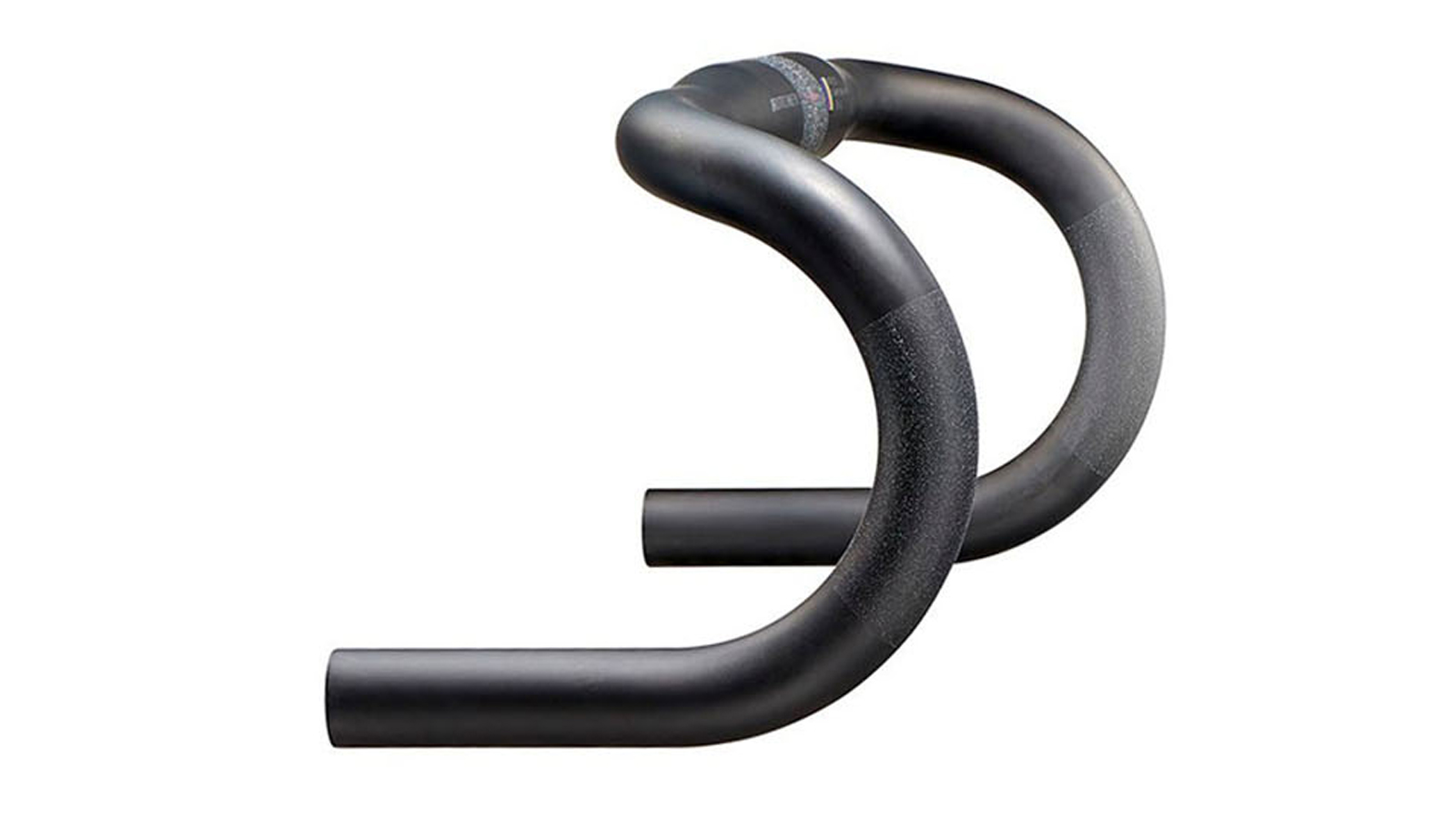
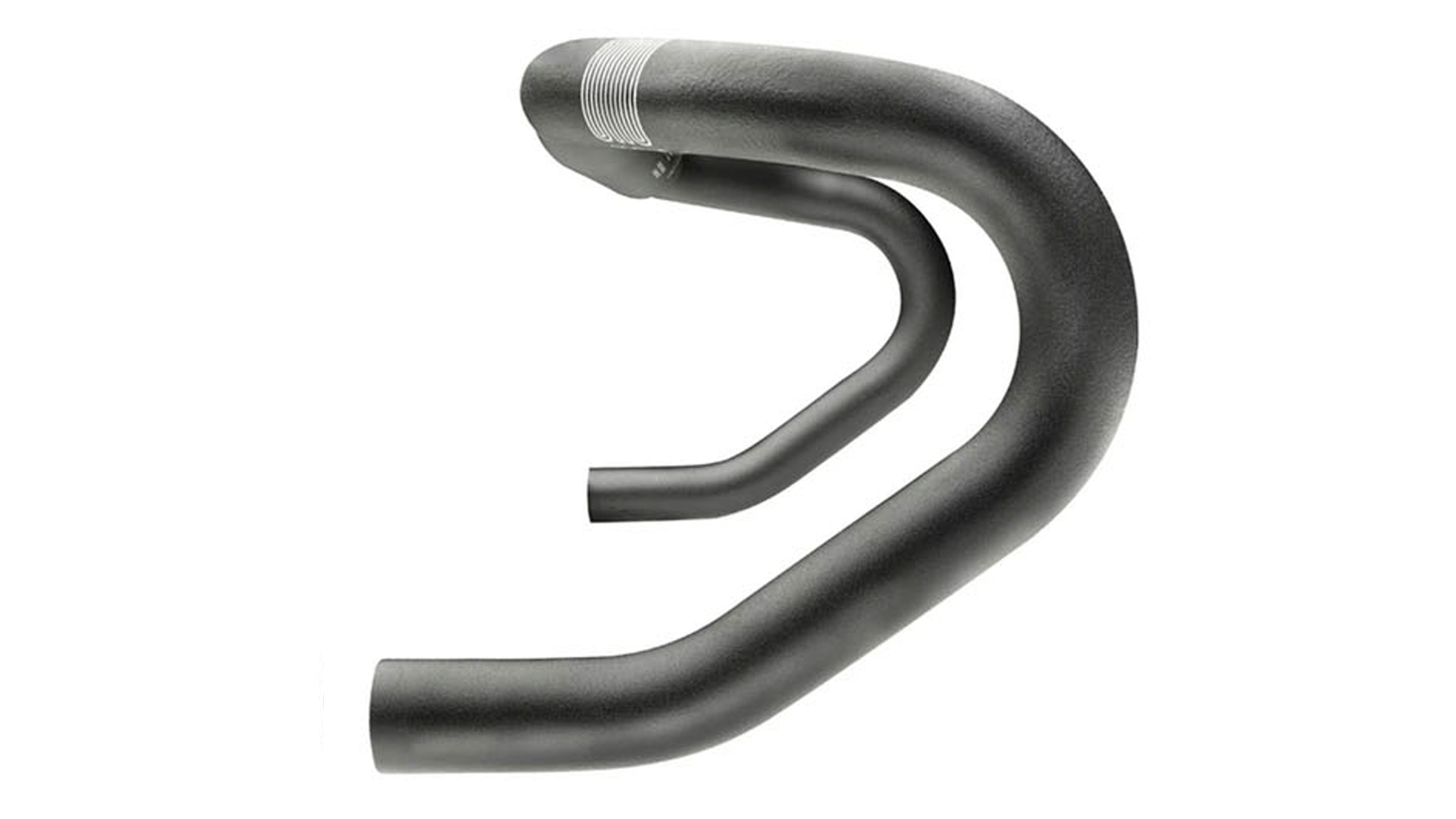
Better in what way? They are certainly lighter, but grams matter less than drag coefficients. Carbon is easier to shape into unusual forms to really cheat the wind, so carbon aero bars and particularly single-piece cockpits are technically going to be 'better', as they are lighter, stiffer, and the most aero, but they are almost always far more expensive. The best price-to-performance ratio will come from alloy aero bars, but for many of us switching bars is more about ergonomics than speed.
What is meant by 'clamping diameter'?
The clamping diameter is in regards to the diameter of the very central portion of the handlebars, where the stem clamps onto them. For the most part, road handlebars are 31.8mm (you can view this as 'normal'). Older bars sometimes come in 25.4mm, but this is unusual, and more common on more classic-style bars, or very old-fashioned steel options to pair with quill stems.
If you are changing handlebars and ordering yourself some new ones, you will need to make sure the handlebar diameter matches the stem clamp size to ensure the bars and stem will fit properly together.
Which handlebar will fit the most accessories?
If you like to clamp lights, computers, bar bags, a bell etc on your bars then a simple set with a horizontal top and round tubing will be the best. Aero bars, and even ergonomically shaped options, reduce the real estate available onto which you can clamp things. Look at the Roval Rapide Cockpit bars for example; without a branded, very slimline computer mount there is nowhere to mount anything.

Do all handlebars have internal cable routing?
No, but it's becoming increasingly common. If you don't have internal cable routing then you can still use bars without access ports worry-free, but if you require cable routing then you need to make sure your new bars have the required holes. Some bars have exit ports before the stem clamp, some within the stem clamp area, and some both, so cross-check with your current bike to avoid any fitting issues.
What's the point of curved handlebars?
If you're coming to the road (and gravel) riding from flat bars you may be wondering why the silly-looking bars. The short answer is to provide multiple hand positions, which comes in handy on longer rides. You can hold the hoods, you can hold the tops, and you have several different options down below with the curved portion. All of these move your wrists and hands about and help to reduce fatigue.
If you ride 'in the drops', you can also reduce your frontal area, which should reduce your wind resistance and potentially help you to go faster. It should also weight your front wheel a little more, which can improve handling on fast descents and it may also give you more leverage on the handlebars for all-out sprints.
The latest race content, interviews, features, reviews and expert buying guides, direct to your inbox!
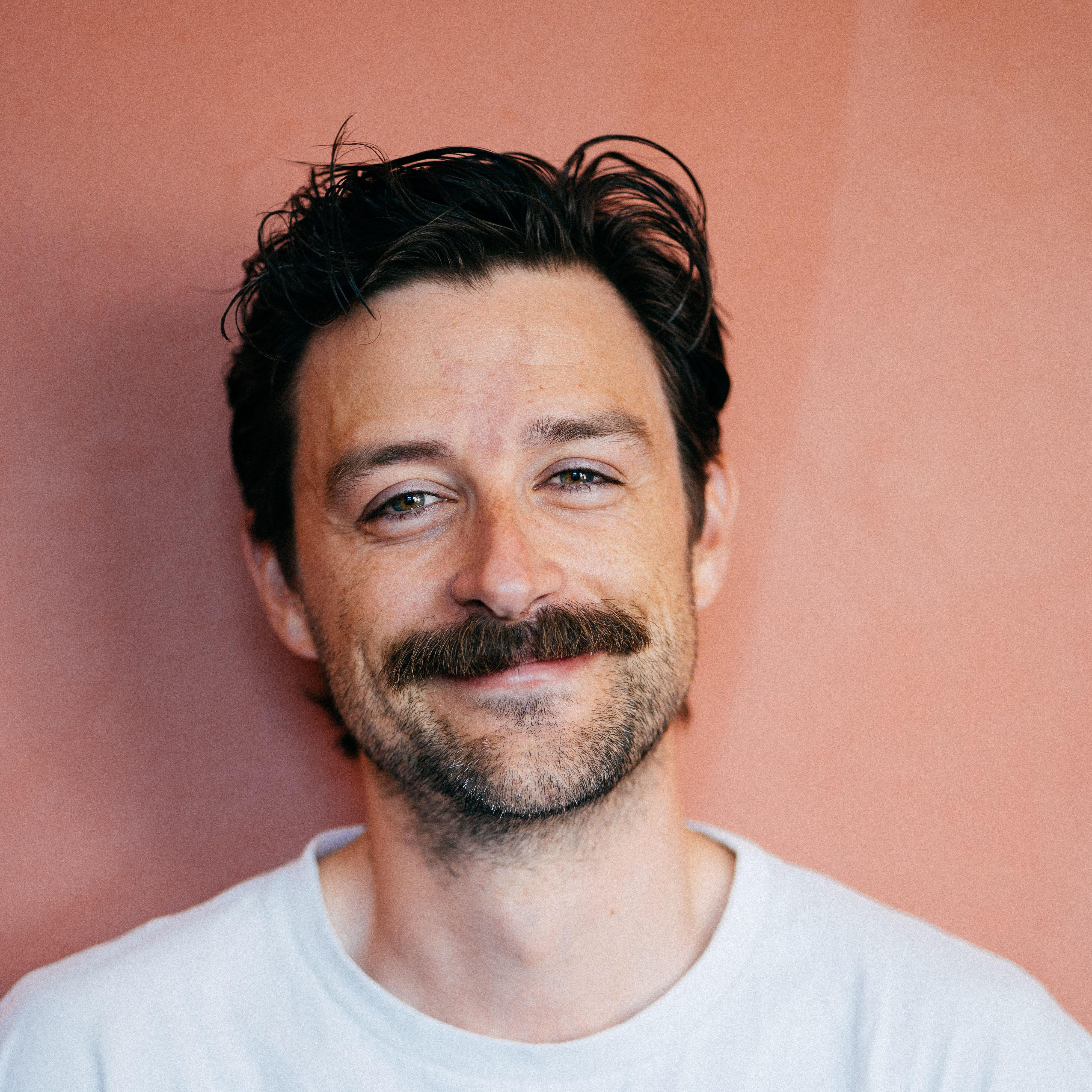
Will joined the Cyclingnews team as a reviews writer in 2022, having previously written for Cyclist, BikeRadar and Advntr. He’s tried his hand at most cycling disciplines, from the standard mix of road, gravel, and mountain bike, to the more unusual like bike polo and tracklocross. He’s made his own bike frames, covered tech news from the biggest races on the planet, and published countless premium galleries thanks to his excellent photographic eye. Also, given he doesn’t ever ride indoors he’s become a real expert on foul-weather riding gear. His collection of bikes is a real smorgasbord, with everything from vintage-style steel tourers through to superlight flat bar hill climb machines.